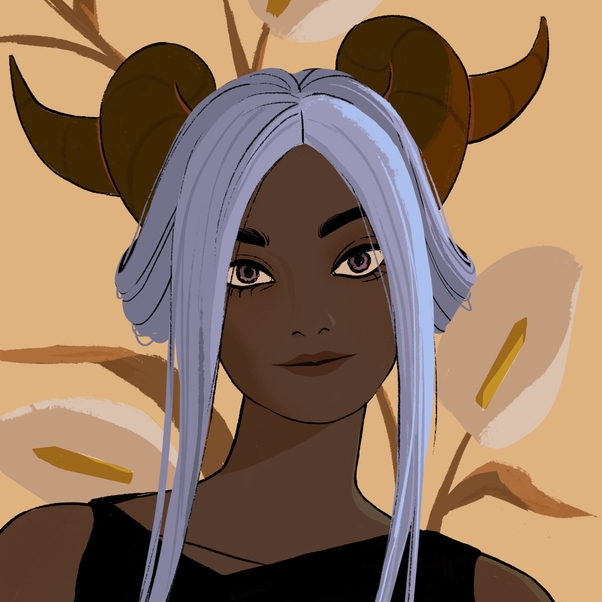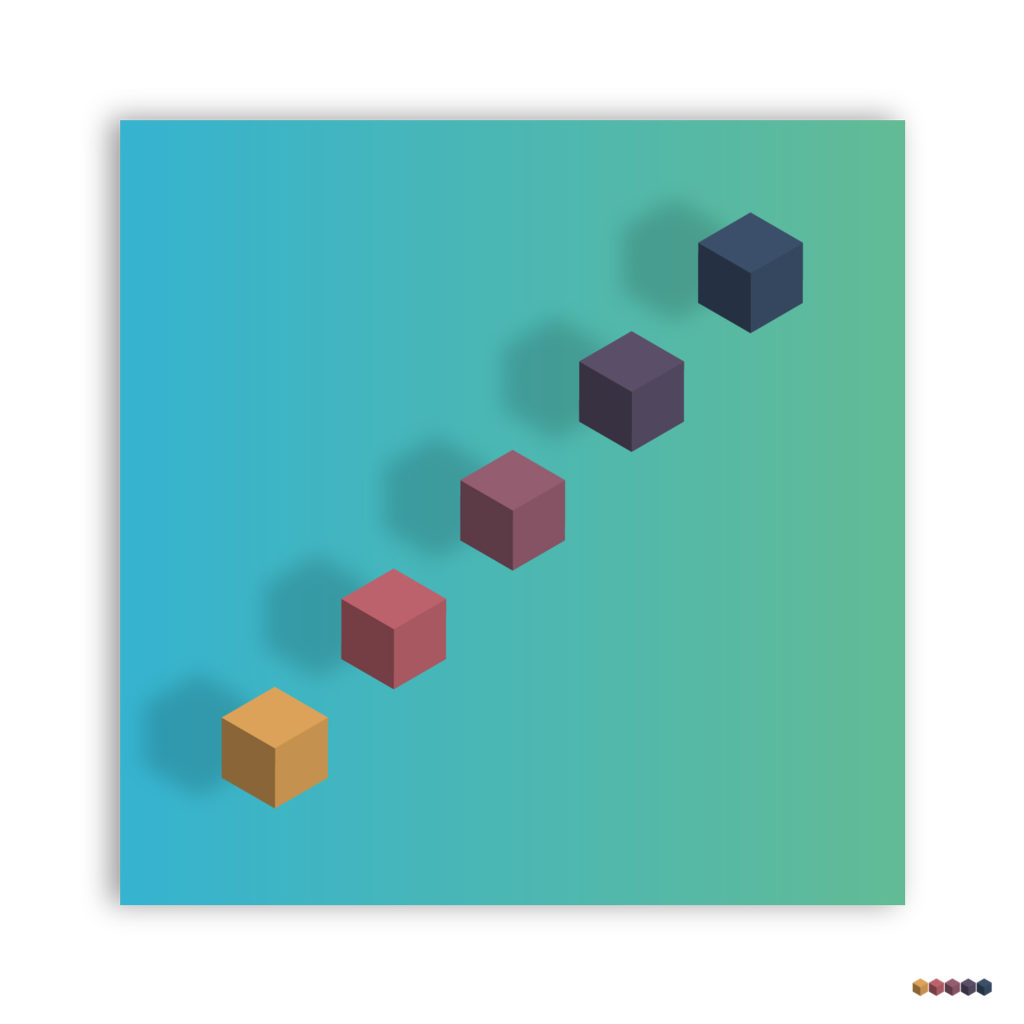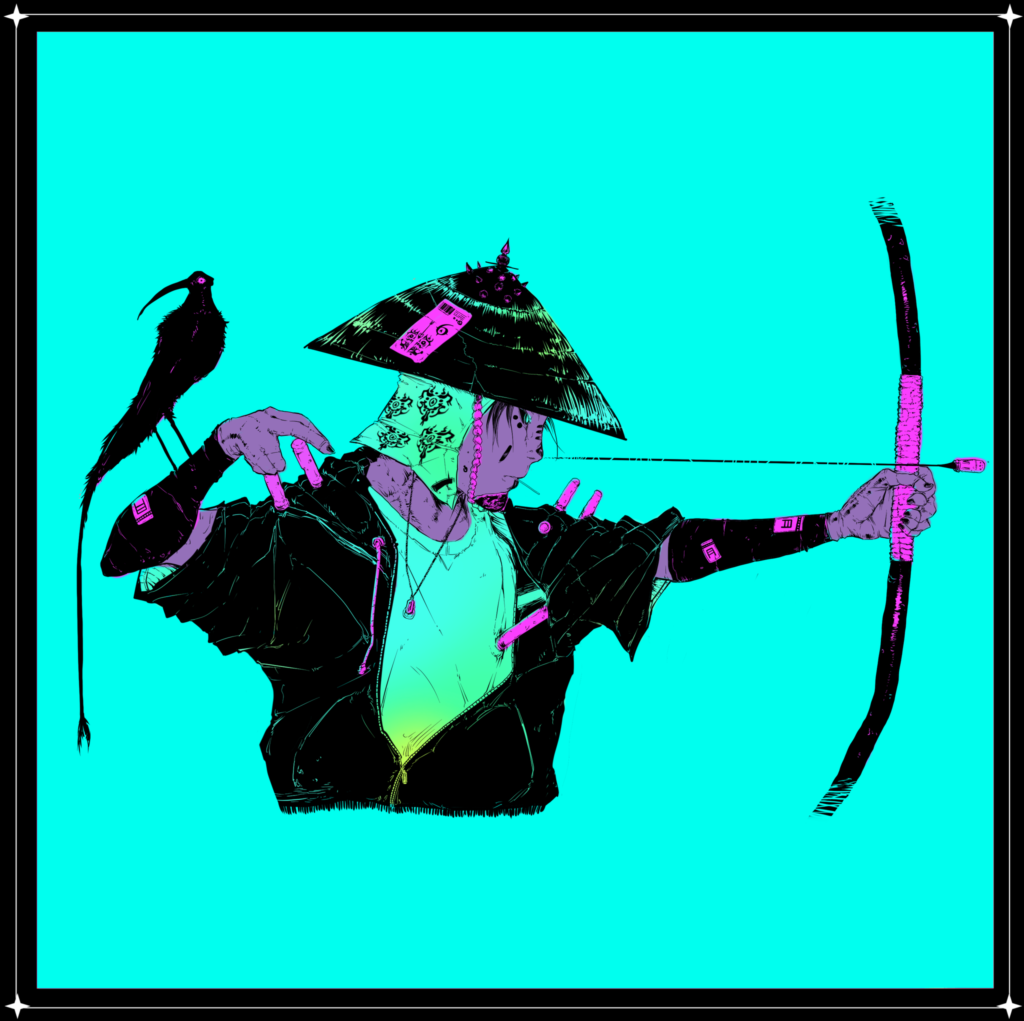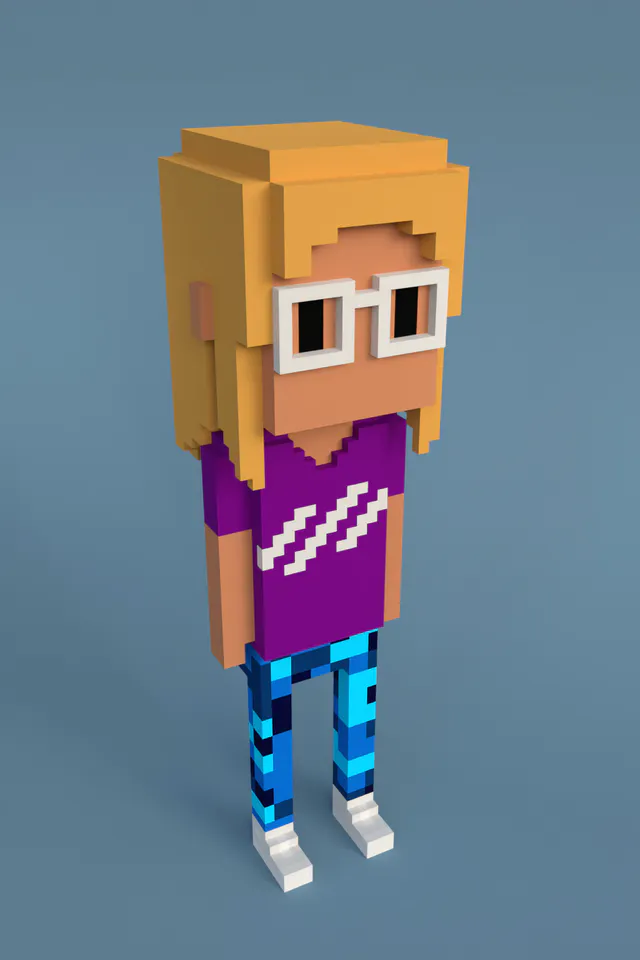OpenSea is the giant of the NFT marketplace space. It’s the place everyone looks at if they want to buy or sell an NFT.
In fact, OpenSea is so big, there’s a decent chance that any NFT service that’s also providing a window into NFTs is ultimately using OpenSea as well, via its free NFT API. All of this clout has driven it to a valuaton of $13.3B in its latest round of financing. Not bad selling a product anyone can steal by right-clicking.
Winner-Take-All
Meanwhile, driven in part by the extraordinary boom in NFTs that came out of nowhere in early 2020, there’s been a rush of entrepreneurs chasing OpenSea’s lead and starting NFT companies. As it stands, all of their volume combined represents a very small portion of what sells over OpenSea every month, but things move fast in crypto.
OpenSea’s dominance is down to the fact that it basically invented the idea of an NFT market. As metaverse investor Andrew Steinwold said on Twitter, “These are the guys that were busy building & grinding since 2017 back when 99% of people in CRYPTO laughed at NFTs.” With all that success, competitors are obviously going to circle, but the internet tends to be a winner-take-all place. Most retail sales online go through Amazon. So much search goes through Google. Entrepreneurs have been trying to unseat the giants for years, with little success.
No Protection
But OpenSea is built for the new internet using the prior internet’s framework, fundamentally outside the core values of the cryptocurrency world. For example, OpenSea offers no protection against censorship. As a traditional, centralized, US-based company, OpenSea must block users in countries under sanction by the U.S. It’s in the company’s terms of service.
But frustrations are building. First because users feel like the company isn’t delivering a product commensurate with its revenues, and others because they have come to expect that crypto companies share revenue with users through a token.
“This is probably the path they should take if they want to maintain the relevance within the NFT community long term,” Will Peets, founder of 100 Acre Ventures, which focuses on NFTs and Web3, told The Defiant via text message. While OpenSea is showing no sign of going that route, new alternatives, such as LooksRare, are rushing to do so, and OpenSea “will be under continous attack by platforms like LooksRare that better represent the ideals of the crypto community,” Peets argued.
It’s hard to even fathom what an OpenSea token would be worth, but users are well advised to do something else with their time than wait for that airdrop.
In fact, many are doing that: moving on and creating options. “I’m a strong proponent of well thought out and well executed alternatives to OpenSea as I believe that it helps strengthen the industry as a whole and demonstrates the openness of Web3,” Colin Platt, CEO of Unifty, an NFT infrastructure startup, told The Defiant over Telegram. “Biggest thing for me is building on decentralised components and using centralisation to improve the user experience.”
Here’s a survey of a representative handful of alternative markets that are coming up, many of which are looking at different ways to thread Platt’s needle. They each have different strategies that distinguish them from OpenSea, and not all of them are even directly in OpenSea’s space, but will still likely have an overall impact on this market.
Zora

Zora provides perhaps the clearest delineation from OpenSea. It’s a platform that puts an entire marketplace on the Ethereum blockchain. This allows anyone who wants to build a marketplace UI on top of the items available in Zora, including curating specific categories of items and making a marketplace just for those (such as the music marketplace Catalog).
“Think of Zora as like a Uniswap-like approach and OpenSea as a Coinbase-like approach,” Jacob Horne, Zora’s co-creator and himself a Coinbase alum, told The Defiant. With everything on-chain using immutable deployments, its censorship resistant even from its makers. Marketplaces can exclude items, but the protocol cannot.
Gas Fees
The upshot of being on-chain though is that everything will cost more. Any interaction with Zora will incur gas fees, from listing to closing and anything in between. That said, it charges no fees for anything as opposed to OpenSea’s 2.5% on every sale, at least for now.
Zooming out: DEXes like Uniswap, Bancor and Curve have shown that there’s a cohort of people who are willing to pay gas costs for decentralization. Just as it took decentralized exchanges a while to find the right use case to make them fly (that is: automated market makers), the same may be true here.
Zora hopes to be a platform for that innovation. Case in point: PartyDAO built PartyBid on Zora, a very early foray into fractionalized ownership. “We’re not going to try to build a single behemoth marketplace,” Horne said. “It’s kind of like the Shopify to their Amazon.”
X
X is a multichain NFT marketplace that’s owned by its token holders. It’s live and has been running since October 2020, though it really only started trying to build a customer base in December.
“At its core, very tactically, we are a multichain decentralized NFT marketplace. More importantly we are owned and operated by the X community,” Bradley Zastrow, X’s lead contributor, told The Defiant. Zastrow is an alum of both traditional finance, via American Express, and old school crypto, via the company that promotes the Dash cryptocurrency.

Like many companies, X is modeling its tokenomics off of Curve, so the real value and clout will accrue to those who stake the X token, making veX (though this is not yet implemented). Zastrow believes their competitive advantage versus OpenSea is one where everyone involved in the marketplace can benefit directly from its growth.
So far X is running on Ethereum, Fantom and Binance Smart Chain. Zastrow says it expects to expand to more chains soon, most likely favoring those that are compatible with Ethereum’s smart contracts.
Rarible
Rarible is not new any longer. It came on the scene in 2020, and brought liquidity mining and airdrops to NFT holders early.
Rarible started on Ethereum but it’s expanded to Tezos and the Flow blockchain since.
“Next chain that we will go to will be Solana, another big component, and I think when we go to Solana I think we can confidently say that you can go on Solana and find 99% of NFTs that are out there,” Alex Salnikov, Rarible’s chief product officer told The Defiant.

This coverage of NFTs is important because Rarible’s vision is to be a portal into all the NFTs. In that way, it’s looking to follow Google’s example, as a portal into nearly all of the worldwide web. For that reason, users of the Rarible site can even make purchases from OpenSea through their user interface.
The underlying Rarible protocol is governed by the RARI token, which runs its DAO, though for now it’s only a governance token with no form of value capture for its holders. “What we learned is it’s actually hard to govern the frontend,” Salnikov said.
This strategy has won a believer in CoinFund, an early investor in Rarible, believing that the single site to rule them all status quo will not persist. David Pakman, from the team, told The Defiant, via email, “We are skeptical that the Web2 network effects we saw everpresent in Web2 marketplaces are far less likely to exist/persist in Web3. So we think that NFT marketplaces will experience much less customer lock-in.”
Treasure Marketplace
Right now, this market only sells NFTs from four collections, all of which were built with the TreasureDAO’s MAGIC token in mind, but it’s expanding to become a generalized marketplace soon. But with a crucial limitation: Treasure’s marketplace only works on Arbitrum, and that’s the only place it wants to work.
Which puts it solidly outside of OpenSea’s lane (for now), because while OpenSea has been deployed on Polygon since October, it has not done so on Arbitrum.
“There’s a burgeoning collection of NFTs on Arbitrum,” Yuta from the TreasureDAO team told The Defiant. While some other projects we spoke to said they didn’t want to do Arbitrum because of its long withdrawal time, Yuta said this is not an issue for projects built to run there.

“There was never any intention for them going back to L1,” he said. “It’s just untenable to be on L1.”
Despite limiting itself to one L2, Treasure saw $14M in NFT sales via its MAGIC token in December (and it’s already over $50M in January).
The TreasureDAO is an ecosystem inspired by LOOT, taking aim at the metaverse to come, attempting to build one token that all the worlds in the metaverse will want to implement. One part of that is, of course, NFTs, and it’s creating this marketplace primarily because NFT makers on Arbitrum have asked it to.
Like everything else in Treasure, it will attempt to gamify its markeplace for NFT makers just as it gamifies everything else.
Infinity
Infinity announced its intention last year to take on OpenSea by doing exactly what everyone who uses OpenSea now has been asking the company to do, releasing a token. It will probably be called NFT and it will probably come out soon. “We expect there to be a level of virality and increase in usage” when the token is live,” Garrett Allen, a co-founder of Infinity, told The Defiant.
Since then, the founders have started to focus less on directly taking on the entire NFT market and looking more at a particular use case.

“When we see where NFTs are headed, it’s these NFT communities and these collections that are forming into communities,” Allen said. “How do we allow people to better discover the community that is forming? How do you do more community curation overall?”
The NFT token will be for curating what’s on the marketplace. Allen hopes this will be good for promising NFT communities, a more approachable way for the communities that have potential to get verified without generating a gigantic amount of sales. That’s been tough for NFT communities on other platforms.
“I think what matters is how strong the community is,” Allen said.
LooksRare
This is the latest marketplace to capture Crypto Twitter’s attention with a big airdrop bootstrapping a new community around its LOOKS token.
The LooksRare team declined to comment to The Defiant for this story, but as we’ve previously reported, its bringing interesting features to the market, such as allowing buyers to make collection wide bids (80 ETH for any Bored Ape, for example).
In particular though, degens seem to be excited about how staking works on LooksRare. All sales are in WETH and all proceeds for sales are shared among stakers in WETH. In other words, stakers aren’t earning some random new token. They are earning Ether. That’s proven very appealing.

There’s a lot of trades happening right now, too, because users also get rewards in fresh LOOKS tokens for buying or selling NFTs on the site. Obviously, this is crypto, so many users are gaming those rewards.
Of course, a similar thing happened when Compound launched COMP (people would deposit, borrow, deposit again and borrow again, as much as they could), and that’s continued to this day.
The question is if there’s a real business in place as the incentives begin to fade away. That’s a question for all of these platforms. In December, OpenSea earned more in fees ($202M) than all these projects combined did in sales volume.
OpenDAO
The airdrop of the SOS token interrupted many people in crypto’s holiday vacation in something of a pleasant way at the end of 2020. What was less clear was what it was going to do.
9x9x9, the founder of OpenDAO, told The Defiant that he’s driven to build OpenSea as a way of making something that he can be proud of for a very long time. “If it’s succesful 5 years ten years later, I can tell people I am proud that I have built this,” he said.
In rapid succession, he plans to see the DAO launch a marketplace, an NFT minting platform (somewhat in the spirit of token launchpads, like the one on Binance) and, probably sometime in 2022, a standalone blockchain specifically built for NFTs.
Exclusive: OpenDAO Is Building an NFT Prediction Market and Bespoke Blockchain
“Basically what OpenDAO is trying to do is just build better infrastruucture,” 9x9x9 told The Defiant in a phone call. “The NFT market is like the stock market 100 years ago. You have to find a buyer on a telephone and then trade.”
OpenDAO isn’t building a marketplace for NFTs. Its building a predictions market that people can use to place bets on their ideas about NFTs. For example, they could bet that certain collection will flip another in floor price, or that a certain collection will drop in place.
“So now you can actually short NFTs,” 9x9x9 said.
The point of all this is to expand the liquidity in the NFT space, to make pricing more refined. Right now, it’s very hard to reliably price NFTs. They just don’t trade enough. These markets will provide much more refined information, which should make the whole market much more legible and much more feasible to financialize.
Read the original post on The Defiant.
Source: https://thedefiant.io/opensea-challengers-new-marketplaces/
- "
- &
- 100
- 2020
- About
- ADvantage
- airdrop
- Airdrops
- alex
- All
- Allowing
- already
- Amazon
- American
- American Express
- among
- announced
- around
- Automated
- Bancor
- Basically
- being
- Biggest
- binance
- blockchain
- bomb
- boom
- border
- build
- Building
- business
- buy
- Buying
- call
- Censorship
- ceo
- charges
- chief
- Circle
- closing
- Co-founder
- coinbase
- CoinGecko
- collection
- coming
- Communities
- community
- Companies
- company
- competitors
- component
- Compound
- contracts
- Costs
- could
- countries
- Creating
- crypto
- cryptocurrency
- curve
- DAO
- Dash
- day
- Decentralization
- decentralized
- delivering
- DID
- different
- driven
- Drop
- Early
- entrepreneurs
- ETH
- Ether
- ethereum
- Ethereum blockchain
- example
- Exchanges
- Exclusive
- Expand
- expanding
- expects
- experience
- FAST
- Features
- Fees
- finance
- First
- flow
- Focus
- follow
- form
- founder
- founders
- Framework
- Free
- fresh
- GAS
- gas fees
- going
- good
- governance
- Growth
- guide
- helps
- here
- holders
- How
- HTTPS
- idea
- image
- Impact
- implement
- Including
- Increase
- industry
- information
- Infrastructure
- Innovation
- interaction
- Interface
- Internet
- investor
- involved
- IT
- latest
- launch
- lead
- learned
- Level
- Liquidity
- listing
- Long
- looking
- Making
- Market
- marketplace
- Markets
- Matters
- Media
- Metaverse
- mind
- Mining
- move
- Music
- network
- NFT
- NFTs
- Offers
- Officer
- online
- Options
- Other
- Pay
- People
- perhaps
- Phone call
- platform
- Platforms
- Polygon
- Portal
- prediction
- Predictions
- price
- pricing
- Product
- projects
- protection
- protocol
- provide
- provides
- purchases
- question
- range
- RE
- retail
- revenue
- Rewards
- Route
- Run
- running
- rush
- sale
- sales
- School
- Search
- sell
- Share
- shared
- Short
- similar
- small
- smart
- Smart Contracts
- So
- Solana
- something
- Space
- specifically
- stake
- Staking
- started
- startup
- Status
- stock
- stock market
- Strategy
- success
- Survey
- Telegram
- Tezos
- Through
- time
- token
- tokenomics
- Tokens
- top
- trade
- trades
- traditional
- traditional finance
- u.s.
- ui
- Uniswap
- users
- value
- Ventures
- Versus
- vision
- volume
- wait
- web
- Web3
- What
- WHO
- within
- without
- words
- Work
- works
- world
- worldwide
- worth
- X
- year
- years
- youtube







